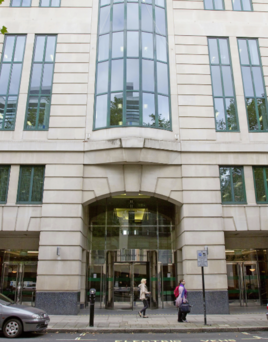Only freight operators and a couple of private passenger operators - known as open access operators - stand outside this nationalised control, together with the owners of the trains themselves, the rolling stock companies.
In other words, Britain’s rail network is nationalised. Its money comes almost entirely from taxpayers and without it the nominally private franchises would be bust. Those franchises own little - they lease their trains, stations and depots from others and they pay a fee to run those trains. Even their staff are only ‘on loan’ because they come with the franchise and transfer from owner to owner as the franchise changes owner. And if a franchise fails and the Government steps in, they move to the new government company as happened with Northern and LNER in recent years.
So to recap, private investors built Britain’s railways. With amalgamations along the way, they were private companies owning their tracks and running their trains until 1948. Then the Government nationalised them and tried several reorganisations until 1996 when privatisation sold the tracks and trains while passenger services became franchised under specifications set by an arm’s length body. Government took back the tracks in 2002 but ran them under an arm’s length body that operated as if it were a private company.
This sheen slipped after the pseudo-private Network Rail racked up so much debt at government behest that the Government’s audit body decided that the company was really public. This allowed more active state intervention. Finally, the passenger collapse caused by COVID-19 exposed the reality that the Government really was the operator of last resort, hence today’s tight control of franchises.
Ministers come in two flavours. They are left-wing or right-wing. The left wing favours state control (nationalisation) and the right wing favours free-enterprise. Britain has a right-wing government under the Conservative Party, which was the party that privatised the railway in the 1990s. It finds itself running a railway nationalised in all but name and is increasing in its control. This is not what it core supporters want.
The main left-wing party in England, the Labour Party, wants that extra control to extend to direct operation of trains. It was a Labour government that pushed fixed-network owner Railtrack over the edge and created Network Rail, albeit its NR was created to act as if it were a private company.
But Labour is not in power and has no chance of power before 2024’s likely General Election.
In Scotland, the left-wing Scottish National Party leads the country’s government. Its transport department, Transport Scotland, funds and closely controls Network Rail Scotland but does not own it. It specifies, funds and closely controls the country’s major passenger franchise, ScotRail which is currently run by Abellio.
It even has an overarching railway brand, Scotland’s Railway, and makes little attempt to hide its overall desire to own its rail network. And it makes no effort at all to hide its desire for independence from the United Kingdom, so it stands to reason it would want to own its rail network, both fixed and moving.
Ministers of all flavours will usually admit that civil servants are not best placed to run railways. Railway lobbyists such as the Rail Delivery Group call for independent, arm’s length management of rail on behalf of the Government. This leads to enthusiasm for British Rail Mark 2 or SRA Mark 2.
The first marks of both organisations depended on government money. BR never quite had what it wanted from government - it would present plans, see government trim them and make the best of what was left.
The SRA needed government money for investment projects as well as for Network Rail and any train operator subsidies. In large part the government decided to take over because the SRA was making spending decisions that ministers believed should rest with them.
Whatever governance model the railway adopts - or, more accurately, has placed upon it - it will come down to control of money. As ministers through the 1970s and 1980s didn’t quite give BR enough, so they stored problems. And when money is tight, activities get cut.
Trackside drains were often a favourite for deferred work. Taking one year with the next, a maintenance holiday did little harm. But doing this year after year creates problems. Arguably, it’s at the heart of many of Network Rail’s problems today with earthworks.
Far from removing the problem of railway spending, privatisation added to it as the clamour to fix problems became stronger and then pressure increased to spend more upgrading the railway to allow it to carry all the extra passengers it was carrying or wanted to carry. Hence Railtrack’s West Coast Route Modernisation of the late-1990s that promised a 140mph railway for franchise owner Virgin but which Railtrack failed to deliver. The SRA rescued this project but the ballooning bill landed at the Government’s feet.
It’s a simple step from the current situation to full-blown nationalisation. Had the current Government wanted this, it could have let each franchise fail and taken them in-house. This would effect temporary nationalisation because the law still forbids the Government to run passenger services beyond the short-term (without defining what this is). Costs would be relatively low in contrast to any decision to buy the trains from their owners, for which the bill would be billions.
That’s essentially the policy that the Labour Party revealed last spring on the eve of its leadership competition that replaced left-winger Jeremy Corbin with the more moderate Sir Keir Starmer. Trade unions support nationalisation and reckon there are few problems that can’t be solved with more state control.














